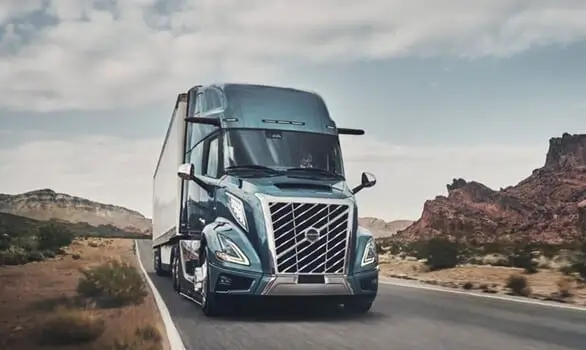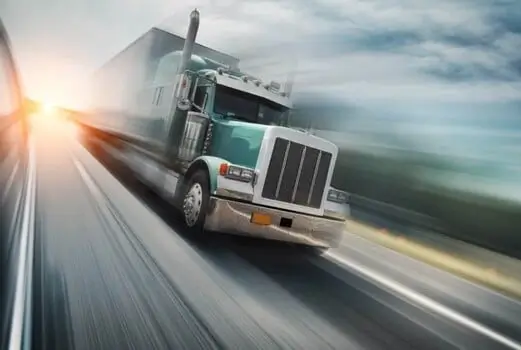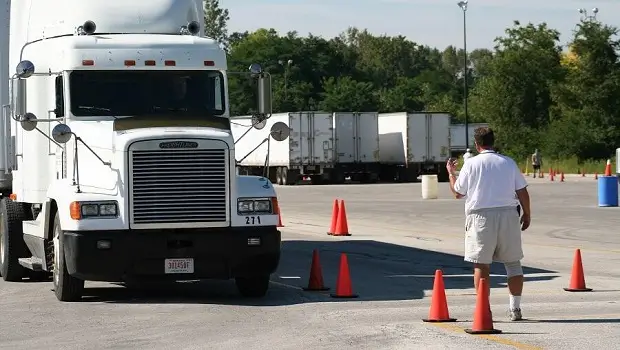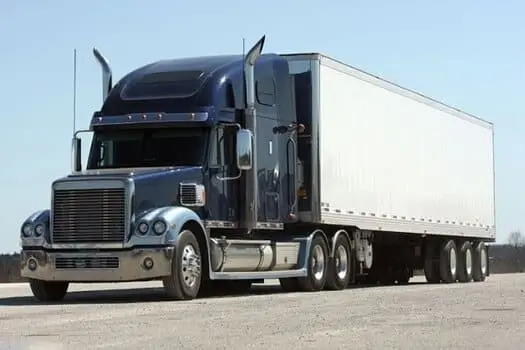

June 20, 2022

1516 Views

6 min read
What Drivers and Fleets Should Know About US Speed Limits
If you are a commercial truck driver in the United States, knowing the speed limit for driving any vehicle is important. With the vast majority of states having a maximum speed limit of 70 mph, knowing if your vehicle is legally allowed to exceed that limit is crucial.
The US has a complex system of speed limits that can be confusing for both drivers and fleet managers. In this article, we’ll break down the different types of speed limits and what they mean for truckers.
What is the fastest speed limit in the US?
If we ask, “What is the fastest speed limit in the US? “, the answer may surprise you. While Texas and Utah have experimented with 80 mph speed limits on some highways, the fastest permanent speed limit in the country is actually 75 mph. You can find this on a section of the Peterbilt 579 test track in Texas.
However, the vast majority of highways in the US have a maximum speed limit of 70 mph. This was introduced as a national maximum speed limit in 1974 to respond to the oil crisis. Prior to this, individual states set speed limits, which could vary widely. The federal 70 mph limit was intended to save fuel by reducing speeds and was initially only a temporary measure.
However, the 70 mph limit has remained in place for over 20 years, but in 1995, Congress allowed states to have the option of raising their speed limits to 75 mph. As of 2016, 35 states have adopted this higher limit.
Nighttime Speed Limits
It is worth noting that nighttime speed limits are generally lower than daytime limits. Due to reduced visibility, driving at night is more dangerous than during the day. Typically, nighttime speed limits are set at ten mph slower than the corresponding daytime limit. So, if the daytime limit is 70 mph, the nighttime limit will be 60 mph.
However, some states have higher nighttime speed limits. For example, in Wyoming, the nighttime speed limit on interstate highways is 80 mph. This is because the state has shallow traffic volumes and large distances between towns.
Speed Limits in Residential Areas
There is no federally mandated speed limit for residential areas in the US. Each state determines the maximum speed limit on any road.
Some states, like Alaska, have a default speed limit of 55 mph if there are no posted signs indicating otherwise. Other states, like Arkansas, have a default limit of 30 mph.
The majority of states have a default speed limit of 25 mph in residential areas, though this can vary depending on the area’s density. For example, urban areas with high population densities will typically have lower speed limits than rural areas.
It’s important to note that even if there is no posted speed limit, drivers are still expected to drive at a safe speed for the conditions. This means that if heavy traffic, bad weather, or pedestrians are present, drivers should slow down accordingly.
Posted Speed Limits
As we mentioned, the default speed limit in most residential areas is 25 mph. However, this can vary depending on posted signs.
It’s important to always obey posted speed limits, even if you think they are too low. If you are caught speeding in a residential area, you could be subject to a fine. In some states, speeding in a residential zone is considered a misdemeanor offense.
If you are caught speeding in a school zone, the penalties can be even more severe. In most states, speeding in a school zone is considered a severe offense and can result in heavy fines and even jail time.
The best way to avoid getting a speeding ticket is to obey the posted speed limits. This might mean driving a bit slower than you’re used to, but it’s better to be safe than sorry.

FOR COMPREHENSIVE FLEET
MANAGEMENT SOLUTIONS
Speed Limits for Trucks
The speed limit for trucks is generally lower than for passenger vehicles. This is because trucks are larger and heavier than passenger cars, and thus take longer to stop. In general, the speed limit for trucks is ten mph lower than the limit for passenger cars.
Why do some trucks have a lower speed limit?
One of the most common questions we get from truck drivers is, “Why do some trucks have a lower speed limit?” The answer to this question depends on several factors, including the type of truck, the load being carried, and the state in which the truck is being driven.
Trucks carrying certain types of hazardous materials are required by federal law to have a maximum speed limit of 55 mph. This is to help prevent accidents and spills. Some states also have lower speed limits for trucks during inclement weather conditions, such as high winds or icy roads.
Additionally, some trucks are equipped with speed limiters, which is a device that prevents the truck from exceeding a certain speed. This is usually set by the truck’s manufacturer or the fleet owner and cannot be changed by the driver.
What are the consequences of speeding?
Speeding is one of the most common violations committed by commercial truck drivers. In fact, according to the Federal Motor Carrier Safety Administration, speeding was a contributing factor in over 4,000 large truck crashes in 2016.
Not only is speeding dangerous, but it can also be costly. If you are caught speeding, you may be issued a citation or ticket, resulting in points on your commercial driver’s license (CDL). Too many points can lead to a suspension or revocation of your CDL. Additionally, speeding violations will likely increase your insurance rates.
If you are convicted of speeding in a work zone, the penalties are even more severe. You may be fined double the amount of a regular speeding ticket and could even face jail time.
Speeding is dangerous, not only for you but also for other drivers on the road. It is essential to know the speed limit for the type of vehicle you are driving and obey all posted speed limits. Speeding may result in citations or tickets and severe consequences.
So, as responsible drivers, let’s all make an effort to obey the speed limit and help make our roads safer for everyone.
Sign up for Exclusive Trucking Tips
Test







